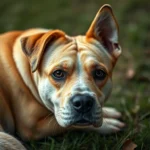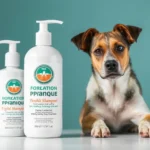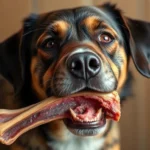
French Bulldogs are beloved for their affectionate nature and charming personalities. However, like all breeds, they are susceptible to certain health issues, particularly concerning their skin. One common concern among French Bulldog owners is the appearance of skin lumps. Understanding why these lumps occur is crucial for maintaining your pet’s health.
Understanding Skin Lumps in Dogs
What Are Skin Lumps?
Skin lumps are abnormal growths that can form on a dog’s body. They can vary in size, shape, and texture and may be classified into various types:
- Tumors: These can be benign (non-cancerous) or malignant (cancerous).
- Cysts: These are usually fluid-filled sacs that can develop within the skin.
While many lumps are benign, distinguishing between benign and malignant growths is essential to determine the appropriate course of action.
Common Types of Skin Lumps in French Bulldogs
French Bulldogs may experience several types of skin lumps, including:
- Lipomas: These are fatty tumors that are generally harmless and occur in older dogs.
- Sebaceous Cysts: Formed from blocked sebaceous glands, these cysts can become infected and may require removal.
- Mast Cell Tumors: These can be malignant and may require immediate veterinary attention.
- Other Common Growths: This includes warts, skin tags, and other benign tumors that may develop due to genetics or environmental factors.
Causes of Skin Lumps in French Bulldogs
Genetic Predispositions
Certain dog breeds, including French Bulldogs, are genetically predisposed to develop specific skin conditions. Research indicates that hereditary factors play a significant role in the propensity for skin lumps, including tumors and cysts. Understanding your dog’s family history can help predict potential health issues.
Environmental Factors
Environmental elements can contribute to the formation of skin lumps:
- Allergies and Irritants: Common allergens like pollen, dust, and chemicals can irritate your dog’s skin, leading to inflammation and lump formation.
- Diet: The nutritional content of your French Bulldog’s diet can significantly impact skin health. Poor-quality food may contribute to skin issues.
- Hygiene and Grooming: Regular grooming helps maintain skin health by removing debris and preventing infections that could lead to lumps.
Aging and Skin Changes
As dogs age, their skin undergoes various changes. The loss of elasticity and changes in skin structure can lead to the development of skin lumps. Regular veterinary check-ups become increasingly important as your dog ages to monitor any changes in skin health.
Recognizing Skin Lumps in Your French Bulldog
Signs and Symptoms
Identifying skin lumps involves observing both physical characteristics and behavioral changes. Look for:
- Physical Characteristics: Size, texture, and location of lumps are crucial indicators. Lumps can feel soft or firm, may be movable under the skin, and can vary in color.
- Behavioral Changes: If your French Bulldog is scratching, licking excessively, or showing signs of discomfort, it may indicate a problem.
When to Consult a Veterinarian
Not all lumps require immediate veterinary attention, but there are specific guidelines to help you decide when to consult a professional:
- Size: If a lump is larger than a pea, it should be evaluated.
- Growth Rate: Rapidly growing lumps are particularly concerning.
- Appearance: Changes in color or texture, such as bleeding or oozing, warrant a veterinary visit.
Early detection and treatment of skin lumps can significantly enhance your dog’s health outcomes.
Diagnosis and Treatment Options
Diagnostic Procedures
When you consult a veterinarian about your French Bulldog’s skin lumps, they will likely perform several diagnostic procedures, including:
- Veterinary Examination: A thorough physical examination helps assess the lump’s characteristics.
- Biopsy: A small sample of the lump may be removed for laboratory analysis to determine if it is benign or malignant.
- Cytology: This involves examining cells from the lump under a microscope.
- Imaging: X-rays or ultrasounds may be needed if the lump is deep or if there is concern about metastasis.
Treatment Approaches
Depending on the diagnosis, various treatment options are available:
- Surgical Removal: This is the most common treatment for malignant tumors or bothersome lumps.
- Non-Surgical Treatments: In some cases, medications or monitoring may suffice, especially for benign conditions.
- Home Care Tips: After treatment, follow your vet’s instructions regarding wound care and any necessary medications to ensure proper healing.
Prevention and Maintenance
Regular Vet Check-ups
Routine veterinary visits are essential for early detection of health issues, including skin lumps. For French Bulldogs, annual check-ups are often recommended, while older dogs or those with a history of skin problems may require more frequent visits.
Grooming and Skin Care
Maintaining your French Bulldog’s skin health involves proper grooming practices:
- Regular Bathing: Use vet-recommended shampoos to keep the skin clean and hydrated.
- Brushing: Regular brushing removes dead hair and skin cells, preventing clogged follicles.
- Moisturizers: Consider using conditioners or moisturizers specifically designed for dogs to maintain skin hydration.
Diet and Nutrition
A balanced diet significantly contributes to overall skin health. Consider the following:
- High-Quality Food: Ensure your dog receives a diet rich in essential fatty acids, vitamins, and minerals.
- Supplements: Omega-3 fatty acids and other supplements may benefit skin condition, but always consult your veterinarian before adding anything to your dog’s diet.
Frequently Asked Questions (FAQs)
Are all skin lumps cancerous?
Not all skin lumps are cancerous. While some lumps may be malignant, many are benign, such as lipomas and sebaceous cysts. A veterinary examination is crucial for accurate diagnosis.
Can I treat my dog’s skin lump at home?
Home treatments for skin lumps are generally not recommended. Professional veterinary advice is essential to determine the appropriate course of action and avoid complications.
How can I differentiate between a normal lump and a concerning one?
Key indicators include size, growth rate, and changes in appearance. Any lump that is growing rapidly, changing color, or causing discomfort should be evaluated by a veterinarian.
Conclusion
Understanding skin lumps in French Bulldogs is vital for proactive health management. Regular veterinary consultations, proper grooming, and a balanced diet can significantly enhance your dog’s skin health. By staying informed and vigilant, you can ensure the well-being of your French Bulldog and address any skin issues promptly.









